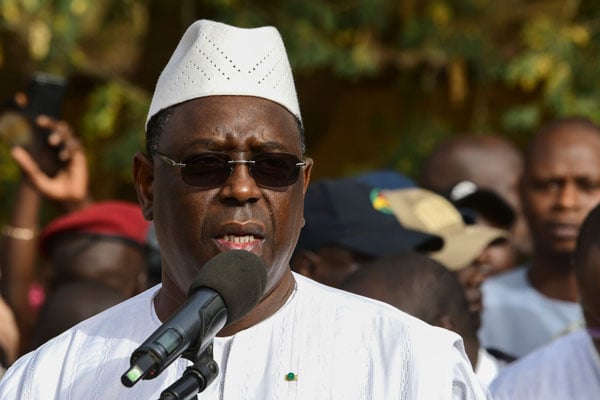Senegal: Model of African stability

Senegalese President who is also the African Union chairman Macky Macky Sall. PHOTO/FILE/AFP
What you need to know:
Goree Island, four kilometres (2.5 miles) off the capital Dakar, was the largest slave-trading centre on the African coast between the 15th and 19th century, ruled by the Portuguese, Dutch, English and French.
Senegal, whose voters have returned Macky Sall as president according to provisional election results released Thursday, is often held up as a model of stability in West Africa.
Some background:
Political stability
Senegal gained independence from France in 1960. It is one of the rare West African nations not to have suffered a coup, although one was allegedly attempted in 1962 by then prime minister Mamadou Dia.
Poet Leopold Sedar Senghor was named first post-independence head of state and in 1963 won its first presidential elections, when he was the only candidate.
He held power for 20 years, retiring in 1980 to be replaced by his prime minister, Abdou Diouf.
Diouf was defeated in 2000 by Abdoulaye Wade of the liberal Senegalese Democratic Party (PDS), the first time in 40 years the Socialists had lost power.
Wade lost the 2012 elections to Sall, his former prime minister.
These peaceful transitions of power have been hailed as a beacon for Africa, although Senegalese elections themselves are often stained by disinformation, accusations of corruption and violence.
Religious tolerance
Senegal is more than 90 percent Muslim, predominantly moderate Sufi brotherhoods. It is known for its religious tolerance.
It has so far been spared the jihadist attacks that have destabilised regional neighbours such as Mali.
In July 2018 it sent the alleged leader of a jihadist cell to prison for a 20-year term in its largest terror-related trial.
Mainly agricultural
Senegal's economy depends largely on agriculture, especially peanut production, millet, rice, sorghum and cotton. Exports include gold and petroleum products.
Growth was 7.2 percent in 2017, surpassing six percent for the third year in a row, according to the World Bank.
However basic services, health care and education are inadequate, sometimes resulting in strikes and protests.
The poverty rate fell to 47 percent in 2011 from 55 percent 10 years previously, according to the World Bank's latest statistics.
Remittances from the large diaspora in Europe, notably France, Italy and Spain, represent 10 percent of gross domestic product.
Sall has made infrastructure a priority, under his "Emerging Senegal" plan which includes a new airport, motorway and a fast train line between Dakar and a new town, Diamnadio.
Conflict in Casamance
Separatists in the southern region of Casamance, cut off from the rest of the country by The Gambia, have been battling for independence more than 35 years.
The Casamance Movement of Democratic Forces (MFDC) campaign has left thousands dead and forced many to flee their homes, although the violence has calmed in recent years.
It has also hurt the economy of the region, heavily dependent on agriculture and tourism.
International fame
Goree Island, four kilometres (2.5 miles) off the capital Dakar, was the largest slave-trading centre on the African coast between the 15th and 19th century, ruled by the Portuguese, Dutch, English and French.
Designated a UNESCO World Heritage site in 1978, it is visited every year by thousands of tourists, especially African-Americans.
Many Senegalese singers are known around the world, such as Youssou N'dour, the group Toure Kunda, Ismael Lo, Omar Pene and more recently the American-Senegalese rapper Akon.
Another star is footballer Sadio Mane, who plays for Liverpool.




